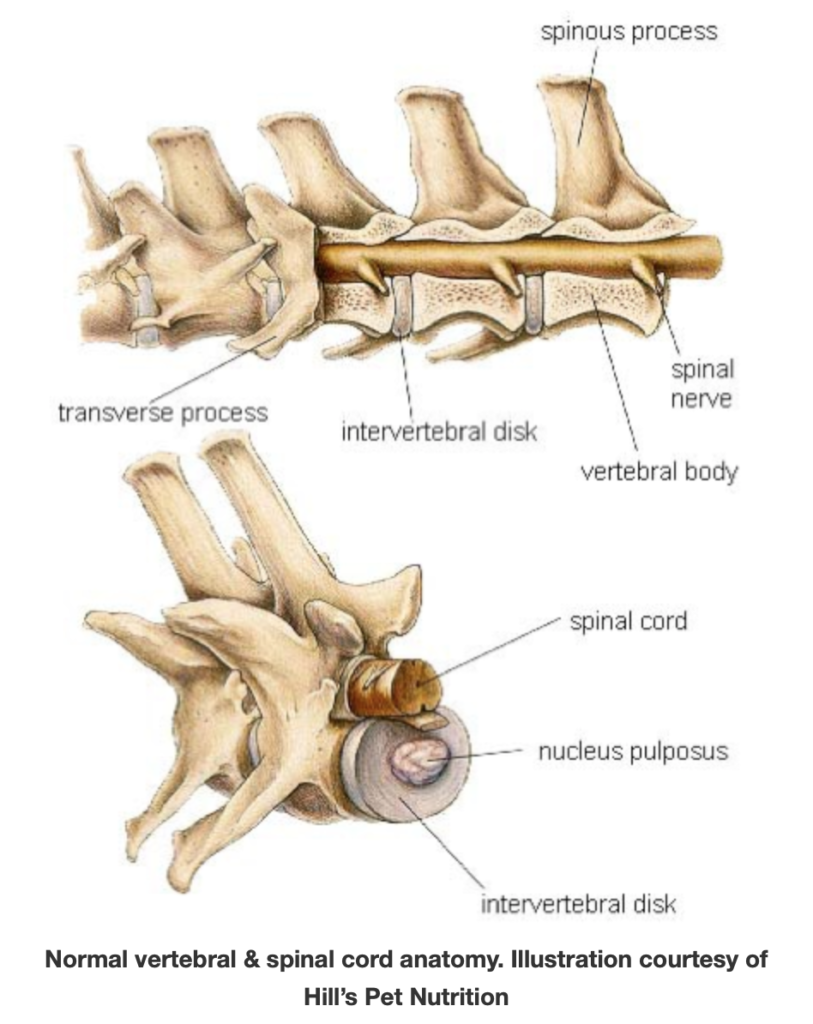
“Should my dog with IVDD be allowed to drag?”
I often get this exact questions from pet parents just like you. Your dog unfortunately had an episode of IVDD and is paralyzed in the back legs. You are scared and worried if he or she will ever walk again. Regardless of you choosing to manage your pup conservatively or undergo surgery, this blog article is for you!
You probably already know that your pup should be on crate rest for the next 8 weeks to allow for healing. When your pup is allowed out of the crate, he will likely try to drag himself around with his front legs. This seems good right? You want him to be moving and he likely enjoys the freedom! Should you allow your IVDD dog to drag?
In my experience, dogs that are allowed to drag, especially when they have no use of their hind legs, either take much longer to walk or don’t walk again. See, dogs adapt pretty darn quick to their situation. If they find out that they can get around by dragging, they will! And they can live a very happy life motoring around like this. However, if the ultimate goal is for your pup to walk again, and he has the potential to, it is best to not allow him to drag. If dogs learn that dragging is a reliable way to get around, it is unlikely for them to work harder to relearn to walk. “If you don’t use it, you lose it” is true in this situation and dogs that aren’t encouraged to use their hind legs to walk will likely lose the ability to do so.
After the initial 8 weeks of crate rest, if you dog is still unable to use his hind legs, some dogs will still regain the ability to walk over the next few months. If you pup has deep pain sensation, can control his bladder/bowels, and can wag his tail, it is likely for your pup to walk again. But, it’s very difficult to say when! That’s why I like to err on the side of caution with allowing dogs to drag.
Now, if after the initial 8 weeks of crate rest, your pup has no deep pain, is unable to control his bladder/bowels, and has not show a tail wag, it is less likely for him to walk. This does not mean it is impossible, just less likely than the situation described above. If you are working with a qualified rehab professional, he or she will be able to give you better indicators of your specific dog’s probability of walking again.
I have seen pups with no deep pain, no bladder control, and no tail wag walk again, however this can take up to a year with consistent rehab and acupuncture. Yes, that is a long time, and yes that can get very expensive. Are you a terrible pet parent if you are unable to provide these services for this amount of time? Absolutely not. Dogs can live very happy lives motoring around by dragging and in a wheelchair. It’s all about what you want for you pup and what you are able to do. Regardless, you can still provide your dog with the best life possible!
If you do allow your dog to drag, it is very important that you frequently check him all over for signs of hair loss, abrasion, scratches, redness or anything out of the norm, which can indicate that dragging is causing damage. Because your dog doesn’t have sensation, or very good sensation, he doesn’t know when something is hurting! So, it’s up to you to make sure that he is not accidentally injuring himself. Drag bags are a great option to help prevent this. Just like with a diaper, you will have to frequently check the drag bag and your pup to make sure he didn’t urinate or defecate in the bag and is clean, which helps to prevent urine scald and urinary tract infections (you can use the diaper with the drag bag).
Wheelchairs/carts are great options for dogs that are unlikely to walk again because they can be safer suspended in the wheelchair and still enjoy walks with the family. More to come on WHEN is a good time to purchase a wheelchair in coming blogs.
Interested in finding out more about how you can help your dog with IVDD at home?
Download our Free Report Here



